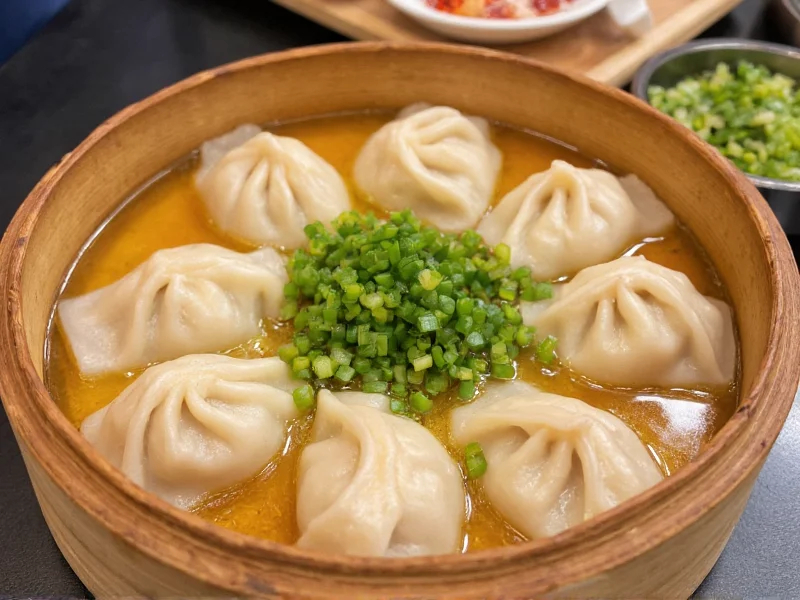Din Tai Fung's soup dumplings represent one of the most perfected iterations of traditional xiaolongbao, the Chinese soup dumplings that originated in the Jiangnan region. What distinguishes Din Tai Fung's version isn't just the recipe, but their meticulous preparation process that has been standardized across their global locations while maintaining authenticity.
The History Behind the Phenomenon
The story of Din Tai Fung's soup dumplings begins in 1958 when Yang Bingyi and his wife opened a cooking oil retail shop in Taipei, Taiwan. When declining oil sales threatened their business, they pivoted to selling xiaolongbao in 1972. Their commitment to quality control transformed a simple decision into a culinary phenomenon. Unlike traditional family-run establishments where recipes vary, Din Tai Fung implemented restaurant-wide standards for their soup dumplings, including exact pleat counts, filling weights, and cooking times.
By the 1990s, their reputation had grown so significantly that the Taipei location earned a Michelin star, a rare achievement for a casual dining establishment serving dumplings. Today, with over 170 locations worldwide, Din Tai Fung maintains the same dedication to soup dumpling perfection that started in that small Taipei shop.
What Makes Authentic D D Soup Dumplings Special
The magic of Din Tai Fung's soup dumplings lies in their construction technique rather than secret ingredients. The broth isn't added as liquid but transformed from solid to liquid during cooking. Chefs prepare a gelatinous pork aspic that's mixed with the filling. When steamed, the aspic melts into the signature broth that surprises first-time eaters.
| Characteristic | Din Tai Fung Standard | Traditional XLB |
|---|---|---|
| Wrapper Thickness | 0.8-1mm | 1-2mm |
| Pleat Count | Exactly 18 | Varies (14-24) |
| Filling Weight | 17g ± 0.5g | Varies |
| Broth Volume | 20ml | Varies |
| Steaming Time | 5 minutes | 6-8 minutes |
The Art of Soup Dumpling Preparation
Creating authentic Din Tai Fung-style soup dumplings requires precision at every step. The process begins with preparing the aspic, which involves simmering pork skin, bones, and aromatics for hours until the collagen-rich liquid sets when cooled. This aspic gets finely diced and mixed with ground pork, ginger, and seasonings.
Wrapper preparation represents another critical element in proper D D soup dumplings technique. The dough must be rolled to consistent thickness—thin enough to be translucent when cooked but strong enough to contain the hot broth. The pleating technique serves both aesthetic and functional purposes, creating a secure seal while allowing steam to circulate evenly during cooking.
How to Properly Enjoy Soup Dumplings
Consuming Din Tai Fung soup dumplings correctly enhances the experience significantly. The proper technique involves:
- Place the dumpling on a spoon
- Optional: Add ginger shreds and a touch of black vinegar
- Gently bite a small hole in the wrapper
- Sip the hot broth before eating the dumpling
- Consume in one or two bites to experience all components together
Mistakes to avoid include biting too aggressively (causing scalding broth to spill) or dipping the entire dumpling in vinegar (diluting the delicate broth). Many diners at Din Tai Fung locations receive small soup bowls to help contain any potential spills during the eating process.
Common Misconceptions About D D Soup Dumplings
Several myths surround Din Tai Fung's famous dumplings. Some believe they use special ingredients unavailable elsewhere, but the truth is their success comes from technique and consistency. Others think the broth is injected after cooking, when in reality, the transformation from solid aspic to liquid broth happens entirely during steaming.
Another misconception involves the 18 pleats—while Din Tai Fung maintains this standard for presentation and structural integrity, traditional xiaolongbao makers often use different counts based on regional styles. The pleat count matters less than the quality of the seal and the balance of components.
Global Influence of Din Tai Fung's Approach
Din Tai Fung's standardization of soup dumpling preparation has influenced how xiaolongbao are made worldwide. Before their international expansion, soup dumplings varied significantly between regions and even between chefs in the same city. Their model demonstrated that maintaining authenticity while implementing quality control could elevate a street food to global recognition.
Many chefs who trained at Din Tai Fung have gone on to open their own establishments, spreading their precise techniques while adapting to local preferences. This has created a new category of "premium" soup dumplings that prioritize consistency alongside tradition.
Frequently Asked Questions
What does D D stand for in D D soup dumplings?
D D refers to Din Tai Fung, the renowned Taiwanese restaurant chain famous for its xiaolongbao. The abbreviation comes from the first letters of the restaurant's name as it's sometimes colloquially referenced by customers.
How do Din Tai Fung soup dumplings contain broth without leaking?
The broth starts as a solid aspic (gelatinous stock) mixed into the filling. During steaming, the aspic melts into liquid broth. The precisely folded 18 pleats create a secure seal that contains the hot liquid until consumption.
Can you make authentic Din Tai Fung-style soup dumplings at home?
While challenging, home cooks can approximate Din Tai Fung's soup dumplings by focusing on three elements: creating a high-quality aspic, rolling thin yet strong wrappers, and mastering the pleating technique. The key is patience with the aspic preparation and consistent wrapper thickness.
Why are Din Tai Fung soup dumplings always served with straw?
The small straw serves a practical purpose - it allows diners to carefully pierce the dumpling wrapper to release steam before biting, preventing burns from the hot broth. This technique helps enjoy the soup dumpling safely while preserving the delicate structure.
What's the proper way to eat Din Tai Fung soup dumplings?
Place the dumpling on a spoon, optionally add ginger and vinegar, gently bite a small hole, sip the broth, then consume the entire dumpling. Avoid biting too forcefully to prevent scalding from the hot broth. Many diners use the provided soup bowl as a safety measure against spills.











 浙公网安备
33010002000092号
浙公网安备
33010002000092号 浙B2-20120091-4
浙B2-20120091-4